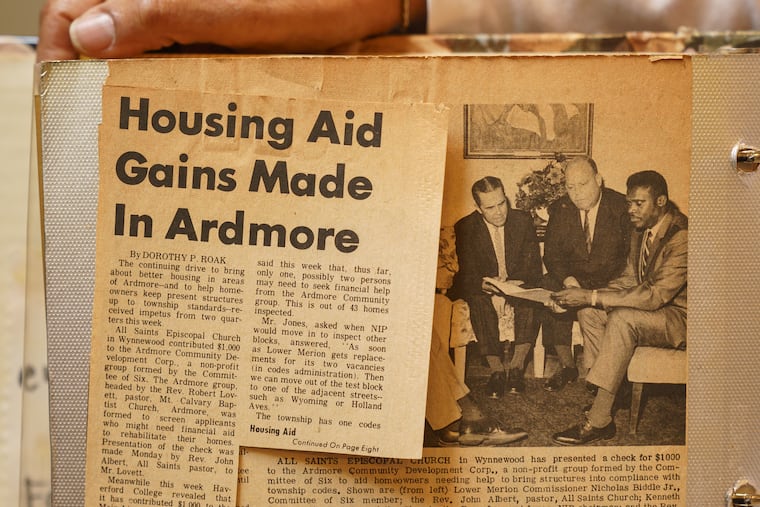
Philadelphia’s Main Line stands today as one of America’s wealthiest enclaves, with enviable schools, parks and majestic homes. It’s also predominantly white.
The latest report from The Inquirer’s More Perfect Union series, published Tuesday, examines how Black families have claimed the area as their own in the face of bans that blocked them from buying homes.
The story, “White Picket Fence” is told through the perspective of one African American family that has remained in the area for five generations.
Here are three takeaways from “White Picket Fence.”
An early model suburb
In the 1920s, American families began moving to the suburbs in significant numbers.
Advertisements marketed large houses and fresh air to urban families. The Main Line, extending from Overbrook to Paoli, was an early model of suburban development built along the historic Pennsylvania Railroad. It housed some of America’s richest families, alongside those that aspired to join their ranks. With their golf clubs and tree-lined subdivisions, Main Line towns shaped the nation’s suburban ideal.
“Those of us who live here can scarcely realize how profound an impression is made upon the foreigner or even upon the visitor from other parts of America as he is driven mile after mile past places where there is no jarring note of ugliness,” reads a 1919 Main Line housing report, according to “White Picket Fence.”
But as the Main Line grew, Black families were shut out. At the time, racial restrictions barred people of color from a 200-lot housing subdivision in Haverford Township — a previously unreported racial restriction.
“It’s kind of disgusting that those racial restrictions were written into deeds,” David Burman, Haverford Township manager, who wasn’t aware of the restriction, said in the report.
Today, Black people make up just 3% of the population in Haverford Township.
A family’s experience, indicative of many
“White Picket Fence” tells the story of exclusionary housing practices on the Main Line through the lens of one family, whose history in the area extends back generations.
Their story illuminates the experience of many Black families in the area.
Earlie Jenkins arrived on the Main Line from North Carolina in 1929, “one of tens of thousands of Black people streaming into Greater Philadelphia for a chance” and later became “part of a small but thriving middle-class Black community.”
He and his wife, Roxanna, worked for white employers and sent their children to white schools. They lived across from a whites-only development.
From all outward appearances, the family “made it.” But in reality, their experience was much more complicated.
“It’s like they open the door and show you the other side,” Jenkins’ great-great-grandson, Toney Goins, said in the report. “But they won’t let you go in.”
A ‘firewall’ of covenants helped keep Black families out
A comprehensive survey of racial restrictions along the Main Line hasn’t been done before, according to the report, though a recent study by the Federal Reserve Bank of Philadelphia found nearly 4,000 racial covenants in the city between 1920 and 1932. The agreements barring African Americans and other people of color from buying property were widespread nationally.
Developers used the restrictions as a marketing ploy to attract white buyers. Advertisements that were printed in The Inquirer promised homes that were “wisely restricted,” or “exclusive and highly restricted.”
Covenants acted as a kind of “firewall,” according to the report.
“The Black population was already really established on the Lower Merion side,” Craig Bailey, a Villanova University professor, said in the report. “These might have been steps taken to prevent the expansion of it.”